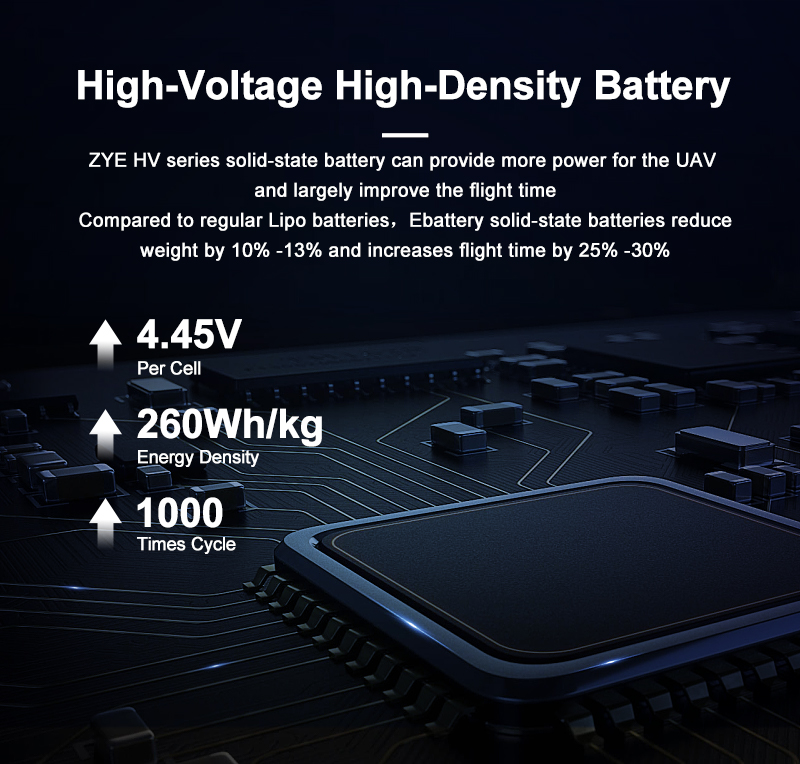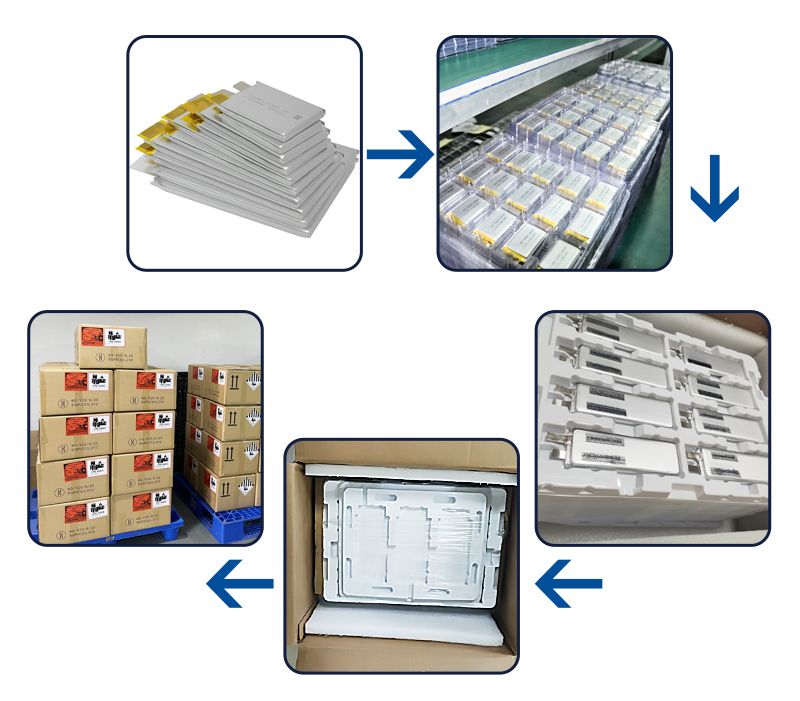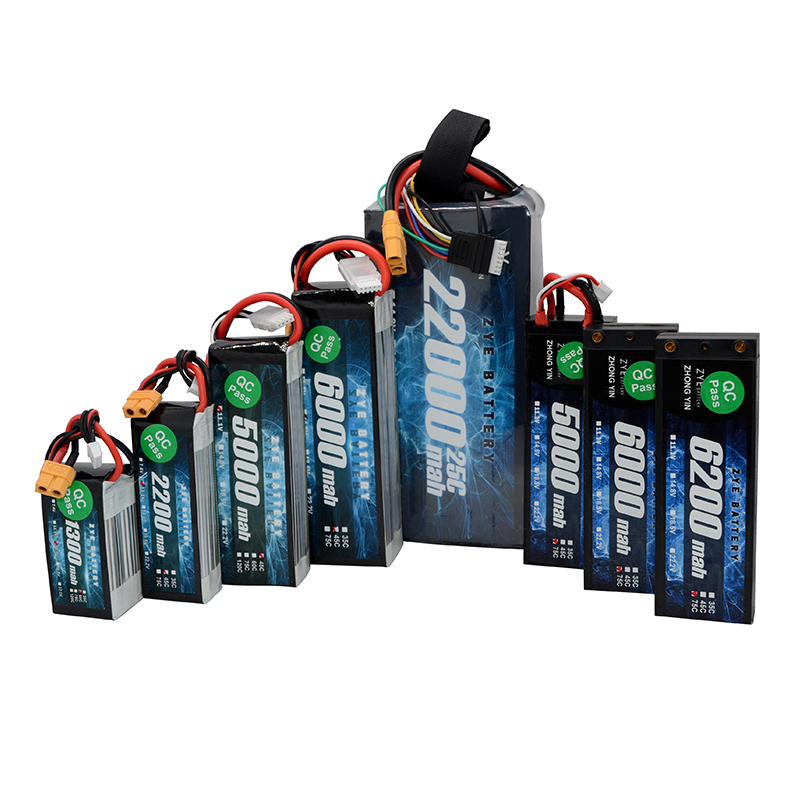How to charge drone hv lipo battery?
2025-08-28
A comprehensive guide to charging HV LiPo batteries: safety, steps, and best practices. High-Voltage Lithium Polymer (HV LiPo) batteries have become a staple in high-performance applications, from RC drones and racing cars to industrial robotics and portable electronics. In this guide, we’ll break down everything you need to know to charge HV LiPo batteries safely and effectively.

Understand HV LiPo Battery Basics
Before diving into charging, let’s clarify key terms to avoid confusion:
Cell Voltage: HV LiPos have a nominal voltage of 3.8V per cell (vs. 3.7V for standard LiPos) and a maximum safe charge voltage of 4.35V per cell .
Cell Count: HV LiPos are sold in “S” ratings (e.g., 2S, 3S, 6S), where “S” stands for series-connected cells. For example, a 3S HV LiPo has a nominal voltage of 11.4V (3.8V x 3) and a max charge voltage of 13.05V (4.35V x 3).
Capacity: Measured in milliamp-hours (mAh), this indicates how much energy the battery can store.
C-Rating: Defines the battery’s safe charging and discharging current. The “charge C-rating” (often 1C or 2C) tells you how fast you can charge it. For a 5000mAh battery, 1C = 5A (5000mAh ÷ 1000 = 5A).
Use a Compatible Charger: Always use a charger specifically designed for HV LiPo batteries. These chargers are capable of handling the higher voltage requirements of lipo batteries and provide the necessary safety features to prevent overcharging or other potential issues.
Balance Charging: Balance charging is a vital aspect of maintaining HV LiPo batteries. This process ensures that each cell within the battery pack is charged to the same voltage level, preventing imbalances that can lead to reduced performance or even battery damage. Most high-quality chargers for lipo batteries include a balance charging feature.
Monitor Temperature: Keep a close eye on the battery temperature during the charging process. If the battery becomes excessively warm or hot to the touch, immediately stop charging and allow it to cool down. Overheating can lead to reduced battery life or, in extreme cases, pose a safety risk.
Charge at the Correct Rate: Adhere to the manufacturer's recommended charging rate for your specific battery. Generally, a charging rate of 1C (1 times the battery capacity) is considered safe for most HV LiPo batteries. For example, if you have a 5000mAh battery, charging at 5A would be appropriate.
Never Leave Charging Batteries Unattended: Always supervise the charging process and never leave charging batteries unattended. This precaution allows you to quickly respond to any potential issues that may arise during charging.
Store Batteries Properly: When not in use, store your HV LiPo batteries at the proper voltage level, typically around 3.8V per cell for long-term storage. This practice helps maintain battery health and prolongs its lifespan.

Critical Safety Tips for HV LiPo Charging
HV LiPo batteries are powerful, but they’re safe when handled correctly. Avoid these common mistakes:
Never Overcharge: Exceeding 4.35V per cell can cause the battery to catch fire or explode. Always use an HV-compatible charger.
Don’t Charge Damaged Batteries: Swollen, leaking, or punctured batteries are unstable—dispose of them at a lithium battery recycling center (never throw them in the trash).
Avoid Over-Discharging: Discharging below 3.0V per cell damages the battery’s chemistry, making it unsafe to charge. Use a low-voltage cutoff (LVC) in your device to prevent this.
Don’t Mix Charger Types: Never use a NiMH or NiCd charger for LiPo batteries—they use different charging protocols and will destroy the battery.
Charge at the Right Temperature: Avoid charging in extreme heat (above 40°C/104°F) or cold (below 0°C/32°F)—this reduces battery life and increases safety risks.

Conclusion
Charging HV LiPo batteries doesn’t have to be complicated—with the right tools, a focus on safety, and adherence to best practices, you can keep your batteries powerful and reliable.
Whether you’re powering a hobby project or an industrial device, following this guide will help you get the most out of your HV LiPo batteries while keeping safety a top priority. If you have questions about specific battery models or chargers, feel free to reach out to our team: coco@zyepower.com—we’re here to help!
























































